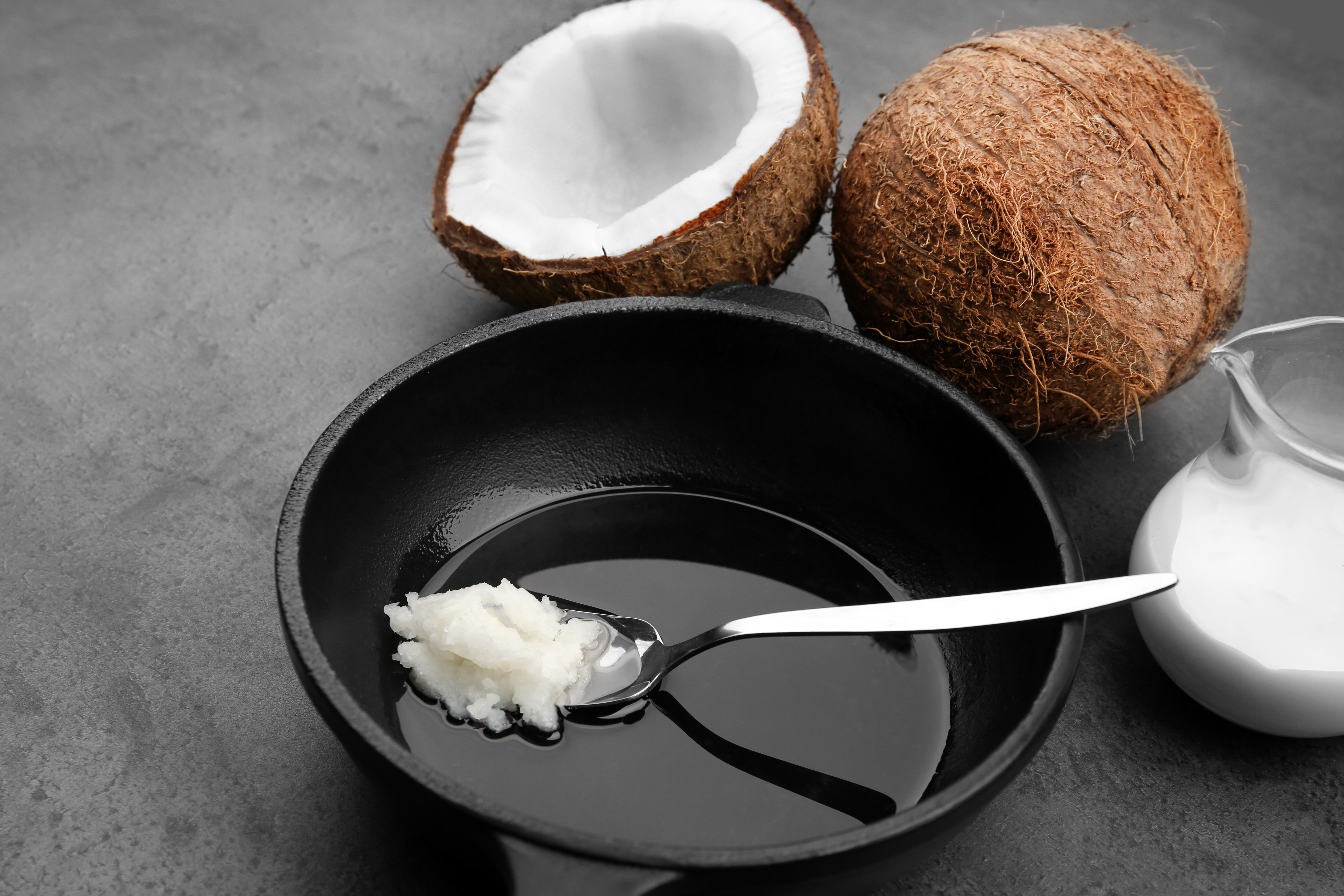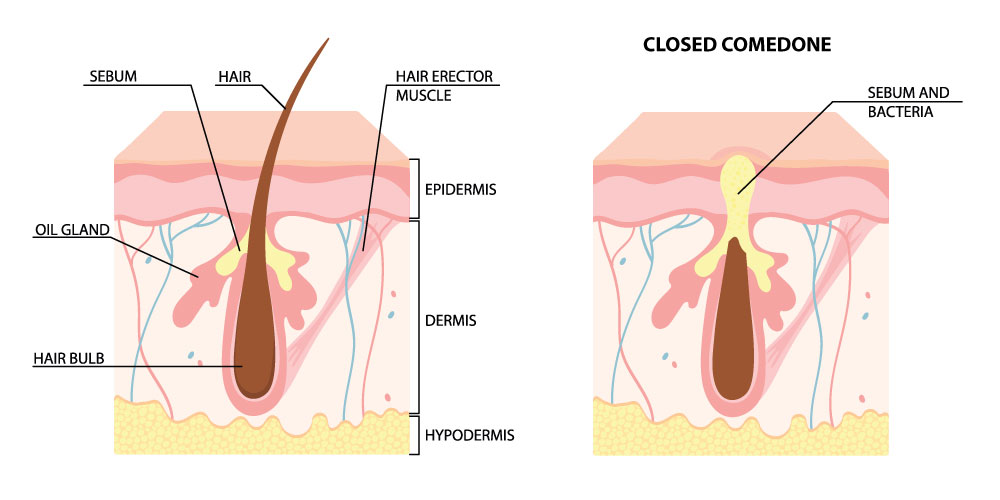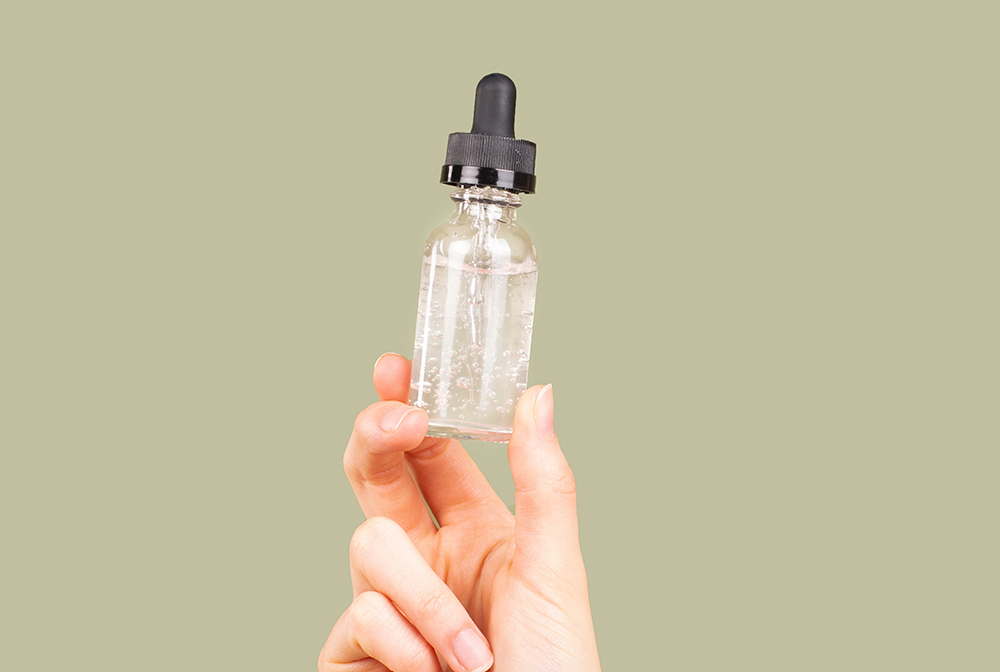When you have acne prone skin the cosmetic products you use become a source of constant scrutiny. Using the wrong product can cause what is known as "acne cosmetica", where breakouts can be tied directly to the skincare and makeup used on skin.
One of the biggest worries is that a product will clog pores. This pore-clogging ability is what is known as comedogenicity. Ingredients in the product gradually cause a buildup of dried skin cells and oils that block the pore, which becomes a fantastic chance for that pore to become inflamed as a full-fledged, visible, painful pimple.
On many blogs and websites you can find charts with ingredients ranked by number to try and tell you how likely an ingredient will be to clog skin. Referring back to these numbered charts feels while shopping feels like the best chance to avoid clogging and painful breakouts.
The problem with those numbered charts is, well, they're all wrong.
We've done the digging through scientific journals to uncover what's real and what's not, and below we'll share why you can unbookmark all those lists and start thinking about comedogenicity in a whole new way.

What Does Comedogenic Mean?
Comedogenic means the likelihood that an ingredient or product will clog pores sooner or later and lead to acne breakouts and other skin issues. A quick Google search for "comedogenic ratings" will turn up the oft used comedogenic scale, with 0 being an ingredient that won’t clog pores on up to 5, which is an ingredient that will clog pores.
Not only is this system outdated, it’s inaccurate.
When you think common pore clogging ingredients, synthetics like isopropyl palmitate and D&C red dyes probably come to mind first. But there are also plenty of natural ingredients that often receive a high comedogenicity rating.
Coconut oil, for instance, often receives a high comedogenicity ranking, and so does cocoa butter.
But the model for this ranking style is outdated and inaccurate and have actually been refuted by current science.
On many sites that share these
comedogenic ranking charts no link to substantiation or study references are provided for the information, which is a serious red flag. The tables have simply been copied and repeated for decades without serious examination, all while the science of comedogenicity continues to evolve.
The Truth Behind the Traditional Comedogenicity Scale
A 2018 article in JAMA Dermatology journal describes the history and problems with comedogenicity testing in the past and present.
The idea of comedogenic products and their affect on the skin was first introduced in 1972. A follicular dilation method was used to evaluate comedogenicity by using a rabbit ear model (REM). The problem here is that, while rabbit and human follicles have some similarities, rabbit skin has low physical and anatomical correlation to human facial skin. Plus, human skin’s response to comedogenic ingredients is much slower than rabbit skin, is less likely to form comedones, and has different sebaceous gland secretion activity. Obviously, the REM is an ineffective and problematic method for determining comedogenicity in human skin.
It wasn’t until 1982 that a noninvasive human assessment model was formed and showed that compounds which ranked moderately comedogenic in REM tests did not produce the same results in human skin. This was an insightful discovery but, since the newer test was performed on the back skin of men and most cosmetic products are formulated for use on the face, the testing process still had issues with accuracy.
In 1989 the American Academy of Dermatology (AAD) stated that “if the rabbit ear test does not show evidence of comedogenesis, the test material under consideration is unlikely to be comedogenic in human skin.” This lack of information feels like the easy way out when you are dealing with acne and searching ingredient listings for ingredients that might clog your pores. Now, several decades later, standardized testing for true determination of comedogenicity in cosmetic formulas is still vastly lacking.

A decade is a long, long time in the science world. Three or four decades is ancient history. Yet the comedogenicity rankings shared everywhere are still based on data generated in the 1970s and 1980s. Unlike jelly sandals and leg warmers old science doesn't really come back around, and these ratings are way out of date.
The messy truth is that while comedogenicity is real there is no one, gold-standard, standardized assessment system currently in place to determine a product or ingredient’s comedogencity. And because there is no set list of comedogenic ingredients by the Food and Drug Administration (FDA), cosmetics manufacturers can play loose with claims of noncomedogenicity in their product formulations.
Even more sticky - because ingredients affect one another in a final cosmetic formulation a 2014 paper notes that you also cannot accurately apply comedogenicity information about one ingredient to a total formulation. This makes it difficult to determine the comedogenicity of a finished product. Ingredients can actually make one another more or less comedogenic.
With the millions of possible ingredient combinations and proportions this is enough to make a person's head spin. The final product should be tested, but no comedogenicity testing is currently required by the FDA.
Furthermore, comedogenicity isn’t universal to all skin and all people. Your skin may react very differently to an ingredient versus someone else's.
It's all enough to make an acne prone person cry, which is why those number rankings can feel comforting. Even if they're wrong they feel important when fighting unreasonable breakouts.
Even More Problems With Comedogenic Oil Ratings
Natural oils are a type of ingredient often deemed to have at least some pore-clogging ability. There is another very important factor to take into account when considering oils.
One area that is often overlooked when considering what oils clog pores is how they are processed and the freshness of those oils. Even the quality of the original plant material matters, as some processors will still try to use poor quality plant material. By refining the oil offensive odors and colors can be removed, making poor quality oils saleable and profitable.
Most oils used in the cosmetic industry are heavily refined to make them clear and odorless, which makes them less stable and more prone to rancidity. Even partial rancidity changing how they behave on the skin. Refined oils contain fewer natural nutrients and have lost most of their antioxidants, making them more likely to become rancid and sticky and form a film on the skin. This spells trouble for pores, and can amp up inflammation.

This is why oils like sesame oil, which have benefits to the skin in their fresh, raw form and are good choices for those with acneic skin, might show up as comedogenic on traditional scales.
Rancidity is actually oxidation, also known as lipid peroxidation. This is the term for oxygen reacting with the oils to form new compounds that behave in totally different ways than the fresh, unoxidized oils.
Oxidized oils have now been found to be a primary cause of comedone formation and are linked to an increase in acne breakouts.
While it may be fair to say that the majority of drugstore and superstore cosmetics are likely to be filled with highly processed ingredients there are definitely companies producing high quality skincare with fresh, nutrient-rich oils that can help solve skin problems instead of causing them.
Antioxidant-rich ingredients, like unrefined oils, can actually help to prevent breakouts by supplying compounds that actually keep this lipid peroxidation process from occurring on the skin and in the pores.
The key is to purchase products that are made in small batches, and that do not spend months to years in warehouses and on store shelves waiting for purchase, or under bright display lights that can accelerate breakdown.
Of course, not every oil is right for every skin type. Some oils absorb better than others, and some contain better proportions of certain types of beneficial fatty acids that acne prone skin needs. Just don't necessarily rely on comedogenic ratings to tell you which you should be using.
Coconut oil is one that can be beneficial for microbiome management or problematic because of its fatty acids. A lot depends on how it is used in a total recipe, and we've seen great success when using small amounts of coconut oil and combining it with ingredients that benefit acne prone skin to maximize its good properties. To learn more
read our article on coconut oil and acne.
Instead of comedogenic rankings use guides based on fatty acid percentages, which are much more helpful in determining the potential for skin disruption. This is because different fatty acids are actually the biggest reason oils have varying effects on skin, and the right proportions can supplement what your skin is naturally missing.
Some Ingredients Are Still Comedogenic - How To Spot Which Ones to Avoid
A few fatty acids that acne prone skin should avoid include stearic and palmitic fatty acids. These are at high percentages in solid oils like palm kernel and cocoa butter, which helps explain the history of these ingredients showing up on comedogenic ratings tables. Stearic and palmitic fatty acids both have high melting points, and would not melt at skin temperatures. This prevents absorption and coats the skin surface, leading to clogs.
Furthermore many of the synthetic ingredients that have long been noted as comedogenic are actually compounds that include these fatty acids.
- Isopropyl Palmitate
- Isopropyl Isostearate
- Butyl Stearate
- Octyl Stearate
- Octyl Palmitate
- Isocetyl Stearate
- Propylene Glycol Stearate
- Glyceryl-3 Diisostearate
Look at these compounds and you'll notice that they end in "palmitate" or "stearate". This can be one way to recognize some comedogenic ingredients. Stearyl alcohol has also been noted as potentially clogging.
Coconut oil has myristic acid, and you'll see the words myristyl and myristate pop up in additional comedogenic compound names.
Oleic fatty acid would become oleate when in a more complex compound, and you'll see that as well.
Some additional ingredients that have consistently been noted to cause problems are:
- Isostearyl neopentanate
- Isopropyl myristate
- Laureth-4
- Myristyl myristate
- Myristyl ether propionate
- Myristyl lactate
- Decyl Oleate
- Methyl Oleate
- Sorbitan Oleate
- FD&C Red Dyes
It may be reasonable for acne prone people to avoid most ingredients ending in palmitate, stearate, myristate, and oleate, or that include myristyl in their name. Since the cosmetic industry is always creating new compounds, and many are not tested generating a complete list of problem ingredients is nearly impossible.
Clogged Pores Might Be Signs of Skin Barrier Disruption and Hyperkeratosis
What's more it's not necessarily the ability of an ingredient to clog a pore that can cause a breakout. It might just be disrupting your skin barrier.
An ingredient’s ability to disrupt the skin barrier and diminish the skin’s natural sloughing ability may be more likely to result in clogged pores than the ingredient itself. Ingredients that alter the lipid matrix (ceramides, cholesterol, and fatty acids in the skin barrier) can cause increased Trans Epidermal Water Loss, leading to dehydration and imbalance in the skin. Dehydration deactivates enzymes that control skin cell exfoliation, resulting in a layer of dead skin cells that stick together and can easily clog the pores.
That means it may not be ingredients themselves that are clogging the pore, it's just long term dehydration and inefficient exfoliation.
So that opens up a whole new world of ingredients to ogle when it comes to shopping, as silicones, PEG ingredients, steareth ingredients, and synthetic surfactants have sometimes been shown to dehydrate skin through barrier disruption.
This also makes "drying" acne the exact wrong strategy for long term success. More hydration is needed, not less.

What’s Really Clogging Your Pores: Acnegenic vs Comedogenic
As we’ve shown, using products that contain certain “unrefined” or “virgin” oils can be beneficial for those dealing with acne. But it’s also imperative to know what exactly is clogging your pores in the first place. It might not be what you think.
The term “comedogenic” is splashed all over the beauty industry. But how much do you know about the term “acnegenic”?
Comedones are basically plugged hair follicles. Comedogenic ingredients can take weeks or months to gradually cause a clog, so their effect is not immediate. It takes time for them to cause congestion and time for that congestion to be undone.
So what's the deal with those immediate breakouts after using a new skincare product?
Instead of comedogenicity you are experiencing acnegenicity. Acnegenicity is actually inflammation of the hair follicle and pore, and it's really more of a form of contact dermatitis. Still, those breakouts are real, but they are just caused by irritation instead of ingredients clogging pores. If you start getting immediate breakouts and you're still getting them about 7 days after starting a new product it means you should stop using that product and move on to something else.
Interestingly acnegenicity is actually a more common reaction than comedone formation due to comedogenicity, which actually makes it more important than comedogenicity to watch for.
Finding the right cosmetic products for acne prone skin can feel like a daunting task. Always listen to your body, and get the advice of a trained skincare professional when possible. Their experience will help you avoid products that have caused problems for their other clients, making your journey to happy skin shorter and less expensive.
References:
Draelos, Z. D. (2014). Acne Cosmetica. Pathogenesis and Treatment of Acne and Rosacea, 265–270. doi:10.1007/978-3-540-69375-8_35
Maarouf, M., Saberian, C., & Shi, V. Y. (2018). Myths, Truths, and Clinical Relevance of Comedogenicity Product Labeling. JAMA Dermatology. doi:10.1001/jamadermatol.2018.1741
Bowe, W.P., Logan, A.C. Clinical implications of lipid peroxidation in acne vulgaris: old wine in new bottles. Lipids Health Dis 9, 141 (2010). https://doi.org/10.1186/1476-511X-9-141
Shasmitha, R.. (2015). Health benefits of sesamum indicum: A short review. 8. 1-3.
Fine, F., Brochet, C., Gaud, M., Carre, P., Simon, N., Ramli, F., & Joffre, F. (2015). Micronutrients in vegetable oils: The impact of crushing and refining processes on vitamins and antioxidants in sunflower, rapeseed, and soybean oils. European Journal of Lipid Science and Technology, 118(5), 680–697. doi:10.1002/ejlt.201400400
Rocha, M. A., & Bagatin, E. (2017). Skin barrier and microbiome in acne. Archives of Dermatological Research, 310(3), 181–185. doi:10.1007/s00403-017-1795-3
Fulton, J. E., Pay, S. R., & Fulton, J. E. (1984). Comedogenicity of current therapeutic products, cosmetics, and ingredients in the rabbit ear. Journal of the American Academy of Dermatology, 10(1), 96–105. doi:10.1016/s0190-9622(84)80050-x
Disclaimer: The information contained on this site is general in nature and for informational purposes. It is not meant to substitute for the advice provided by your own physician or other medical professional. None of the statements on this site are a recommendation as to how to treat any particular disease or health-related condition. If you suspect you have a disease or health-related condition of any kind, you should contact your health care professional immediately. Please read all product packaging carefully and consult with a healthcare professional before starting any diet, exercise, supplementation or medication program. Cosmetic products have not been evaluated by the Food and Drug Administration and are not intended to diagnose, treat, cure, or prevent disease.


